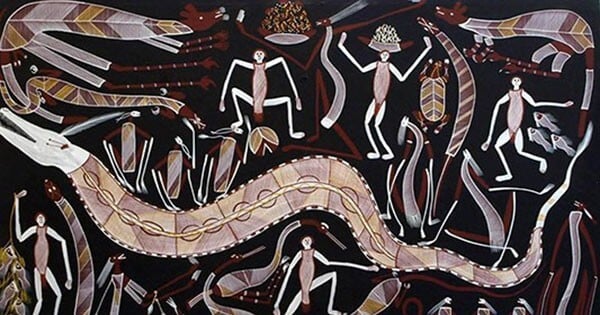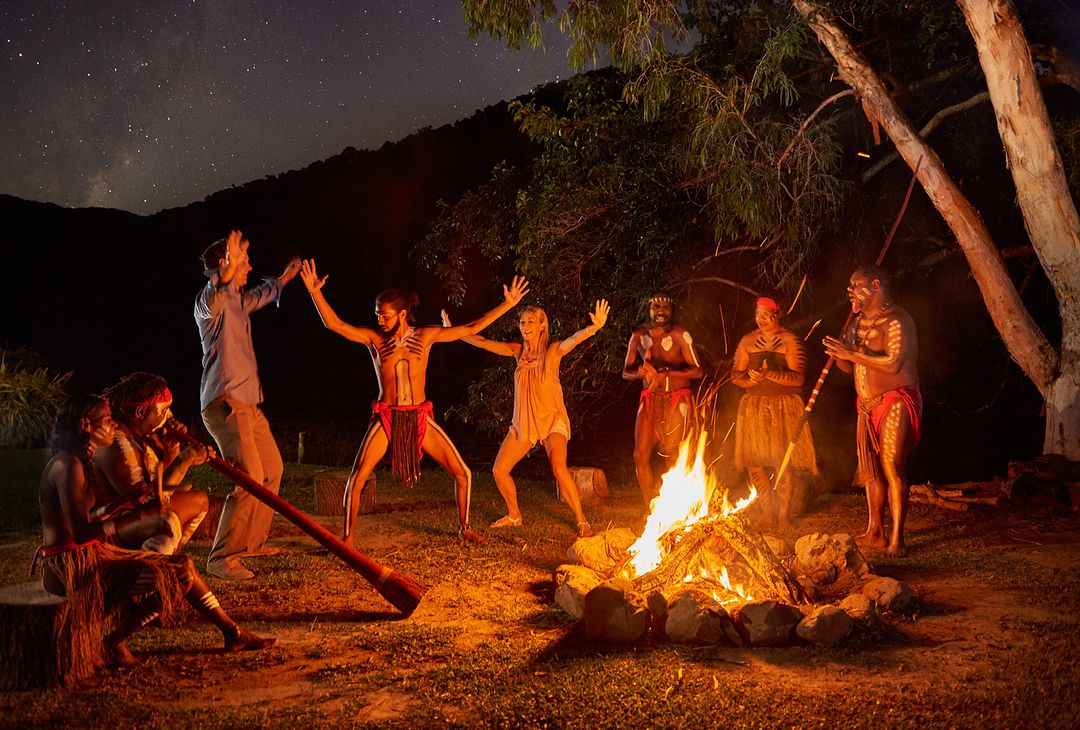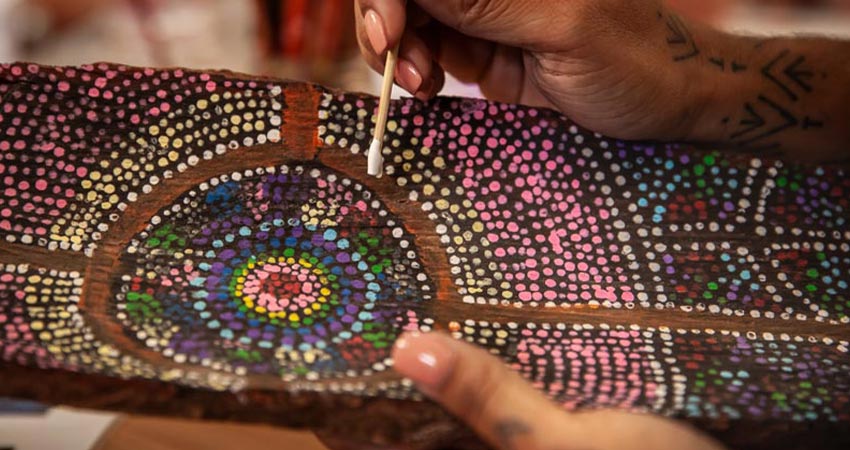Where in Australia Does Dreamtime Still Thrive? Exploring the Living Legacy of Aboriginal Culture
Where in Australia Does Dreamtime Still Thrive? Exploring the Living Legacy of Aboriginal Culture

The Australian landscape is a tapestry woven with ancient stories, vibrant traditions, and a profound connection to the land. This connection, known as Dreamtime, is the foundation of Aboriginal culture, a spiritual realm where ancestral beings shaped the world and continue to influence the present. While Western society often views Dreamtime as a historical relic, it is a vibrant, living force that continues to guide Aboriginal communities across Australia.
This article delves into the heart of this spiritual world, exploring where in Australia Aboriginal people still actively practice Dreamtime beliefs and how these practices shape their lives today.
Related Articles: Where in Australia Does Dreamtime Still Thrive? Exploring the Living Legacy of Aboriginal Culture
- Unveiling The Power And Meaning Behind Male Aboriginal Names
- The Unseen Tapestry: Exploring The Complexities Of Australian Aboriginal Land Ownership
- A Taste Of The Outback: Exploring The Vibrant World Of Australian Fruits
- The Dreamtime: A Journey Through The Creation Myths Of Aboriginal Australia
- Unveiling The Spirit: Exploring The Diverse World Of Aboriginal Totems
The Enduring Power of Dreamtime
Dreamtime is not simply a collection of stories; it is a complex, interconnected system of beliefs, rituals, and practices that defines the relationship between Aboriginal people and their land. It explains the creation of the world, the origins of plants and animals, the significance of natural features, and the responsibilities of each individual to maintain harmony within their community and with the environment.
Beyond the Outback: Dreamtime Across the Continent
Contrary to popular belief, Dreamtime is not confined to remote outback communities. While the arid landscapes of Central Australia may evoke a sense of ancient wisdom, Dreamtime is alive and thriving in all corners of the continent, from the bustling cities to the rugged coastlines.
Exploring the Living Legacy
Here are some regions where Dreamtime practices are particularly prominent:
1. Arnhem Land, Northern Territory:
Arnhem Land is a cultural heartland, home to diverse Aboriginal communities and a rich tapestry of Dreamtime stories. The region is known for its intricate rock art, traditional ceremonies, and strong connection to the land. The Yolngu people, who have inhabited this region for thousands of years, continue to practice Dreamtime rituals, including ceremonies for rainmaking, hunting, and healing.

2. Uluru-Kata Tjuta National Park, Northern Territory:
Uluru, also known as Ayers Rock, is a sacred site of immense spiritual significance. For the Anangu people, the traditional custodians of this land, Uluru embodies the Dreamtime creation story and serves as a reminder of their ancestral connection to the earth. Visitors are encouraged to learn about the cultural significance of Uluru and respect the traditional laws and customs that govern this sacred site.
3. Western Australia:
The vast expanse of Western Australia is home to numerous Aboriginal communities, each with its own unique Dreamtime stories and traditions. The Kimberley region, in particular, boasts a wealth of ancient rock art, including the world-renowned Bradshaw paintings. These paintings depict Dreamtime beings, stories of creation, and the everyday lives of the Aboriginal people who lived in this region thousands of years ago.
4. Sydney Basin, New South Wales:

While Sydney is a modern metropolis, the surrounding area is rich in Aboriginal history and culture. The Sydney Basin is home to the Gadigal people, whose Dreamtime stories are woven into the landscape, from the iconic Sydney Harbour Bridge to the lush bushland surrounding the city.
5. Tasmania:
Despite the loss of much of its original culture following European colonization, Tasmania continues to hold significant cultural value for Aboriginal people. The Palawa people, the traditional custodians of Tasmania, are actively reviving their Dreamtime traditions, including language, storytelling, and ceremonial practices.
Dreamtime in Action: Modern Expressions of Ancient Wisdom
Dreamtime is not a static relic of the past; it is a dynamic force that continues to shape the lives of Aboriginal people today. Here are some examples of how Dreamtime is being actively practiced in contemporary Australia:

- Land Management: Dreamtime knowledge is essential for sustainable land management. Aboriginal people use their understanding of the land’s history, ecology, and spiritual significance to guide their practices, ensuring the health and well-being of their country.
- Art and Culture: Dreamtime stories are expressed through various art forms, including painting, dance, music, and storytelling. These expressions are not just artistic creations; they are powerful vehicles for transmitting knowledge, values, and cultural identity across generations.
- Education and Awareness: Aboriginal communities are increasingly sharing their Dreamtime stories and traditions with wider audiences through education programs, cultural tours, and public events. This sharing of knowledge helps to promote understanding and respect for Aboriginal culture.
- Reconciliation and Healing: Dreamtime provides a framework for understanding the impact of colonization and the ongoing struggle for recognition and self-determination. It offers a path towards healing and reconciliation, based on shared values of respect, responsibility, and connection to the land.
The Importance of Respect and Understanding
As visitors to Australia, it is essential to approach Dreamtime with respect and understanding. We must recognize that Dreamtime is not a tourist attraction; it is a living, breathing expression of Aboriginal culture.
Here are some ways to show respect for Dreamtime:
- Learn about Aboriginal culture: Engage with Aboriginal communities, visit cultural centers, and learn about Dreamtime stories and traditions.
- Respect sacred sites: Be mindful of the cultural significance of places like Uluru and other sacred sites. Avoid climbing on Uluru and follow any guidelines provided by traditional custodians.
- Support Aboriginal businesses: Patronize Aboriginal-owned businesses and contribute to the economic empowerment of Aboriginal communities.
- Be an ally for reconciliation: Advocate for policies and initiatives that promote justice, equality, and self-determination for Aboriginal people.
Dreamtime is a vital part of the Australian cultural landscape, a testament to the enduring strength and resilience of Aboriginal people. By embracing the wisdom and beauty of Dreamtime, we can foster a deeper understanding and appreciation for the rich tapestry of Australian culture.
FAQ
Q: How can I learn more about Dreamtime?
A: There are many resources available to learn more about Dreamtime, including:
- Aboriginal cultural centers: Visit cultural centers in major cities and regional areas.
- Museums and galleries: Explore exhibitions and collections that focus on Aboriginal art and culture.
- Books and documentaries: Read books and watch documentaries by Aboriginal authors and filmmakers.
- Online resources: Explore websites and social media accounts dedicated to Aboriginal culture and history.
Q: Can I participate in Dreamtime ceremonies?
A: Access to traditional ceremonies is usually restricted to members of the relevant Aboriginal community. However, there are opportunities to witness public performances and learn about ceremonial practices.
Q: How can I show respect for Dreamtime?
A: Show respect by:
- Learning about Aboriginal culture: Engage with Aboriginal communities, visit cultural centers, and learn about Dreamtime stories and traditions.
- Respecting sacred sites: Be mindful of the cultural significance of places like Uluru and other sacred sites. Avoid climbing on Uluru and follow any guidelines provided by traditional custodians.
- Supporting Aboriginal businesses: Patronize Aboriginal-owned businesses and contribute to the economic empowerment of Aboriginal communities.
- Being an ally for reconciliation: Advocate for policies and initiatives that promote justice, equality, and self-determination for Aboriginal people.
Q: How can I help protect Dreamtime?
A: You can help protect Dreamtime by:
- Supporting organizations that work to preserve Aboriginal culture: Donate to organizations that support Aboriginal education, art, and cultural heritage.
- Advocating for Aboriginal rights: Speak out against racism and discrimination, and support policies that promote justice and equality for Aboriginal people.
- Educating others about Dreamtime: Share your knowledge with friends, family, and colleagues.
By embracing the wisdom and beauty of Dreamtime, we can foster a deeper understanding and appreciation for the rich tapestry of Australian culture.

Closure
Thus, we hope this article has provided valuable insights into Where in Australia Does Dreamtime Still Thrive? Exploring the Living Legacy of Aboriginal Culture. We thank you for taking the time to read this article. See you in our next article!